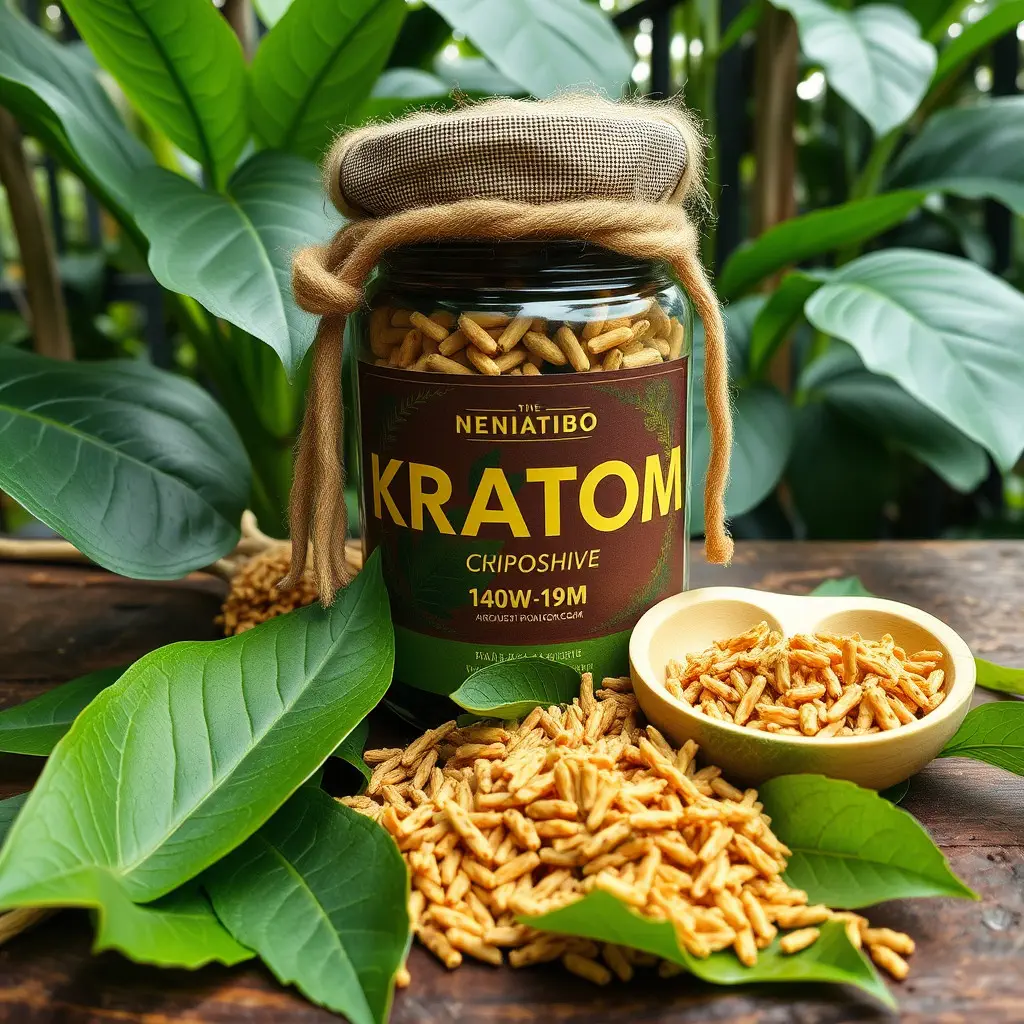Chronic pain from conditions like arthritis, fibromyalgia, and neuropathy affects millions, leading many to explore alternative treatments such as the kava mushroom drink derived from Mitragyna speciosa. This natural remedy has been used in Southeast Asia for its stimulant and sedative properties. Its key compounds, mitraphylline and 7-hydroxymitragynine, potentially offer pain relief by interacting with the brain's opioid receptors. However, while kratom, a component of the kava mushroom drink, shows promise, its efficacy and safety are still under investigation. Users must approach it with caution due to varying implications for different individuals, the risk of dependency, and potential adverse effects. It's crucial to integrate kratom use into a holistic pain management plan under the guidance of healthcare professionals and to be aware of the evolving regulatory status. The kava mushroom drink holds potential as a natural pain remedy but should be carefully considered within evidence-based medical practices.
Chronic pain is a pervasive challenge affecting millions worldwide, often necessitating comprehensive management strategies. This article delves into the emerging role of Mitragyna speciosa, commonly known as kratom, as a potential alternative for those seeking relief from persistent pain. We will explore its historical use, scientific research backing its analgesic properties, and how it can synergistically complement traditional remedies like the kava mushroom drink. Furthermore, we will navigate the complex legal landscape surrounding kratom’s use, ensuring readers are well-informed on responsible consumption practices and compliance with local laws. By integrating kratom into a pain management regimen, individuals may discover a path toward alleviating their chronic discomfort. This article aims to serve as a guide for those curious about the synergistic potential of kava and kratom in managing chronic pain, providing clear and informative insights into these botanical remedies.
- Understanding Chronic Pain and Kratom's Role
- <a href="#—-overview-of-chronic-pain-conditions”> Overview of Chronic Pain Conditions
Understanding Chronic Pain and Kratom's Role

Understanding chronic pain often involves recognizing its multifaceted nature, as it can stem from various conditions such as arthritis, fibromyalgia, neuropathy, and more. The persistent discomfort can significantly disrupt daily activities, leading individuals to explore a myriad of management strategies to alleviate their symptoms. Among these, kratom has emerged as an alternative treatment option for some. Kratom, derived from the leaves of the Mitragyna speciosa tree, traditionally used in Southeast Asia as a mushroom drink known for its stimulant and sedative effects, has gained attention for its potential analgesic properties. The active compounds found in kratom, mitraphylline and 7-hydroxymitragynine, are believed to interact with the opioid receptors in the brain, offering pain relief. However, it’s crucial to approach the use of kratom with caution, as its efficacy and safety profiles can vary among individuals, and regulatory bodies continue to assess its impact. Users should be informed about the potential benefits and risks, including the possibility of dependency or adverse reactions, and consider medical advice before incorporating kratom into their pain management regimen. Additionally, the use of kratom should complement, not replace, other therapeutic approaches recommended by healthcare professionals for managing chronic pain conditions.
Kratom, a mitragynaspeciosa plant, has gained attention in the realm of chronic pain management due to its potential effects on alleviating discomfort and improving well-being. Unlike the kava mushroom drink, which is another natural remedy that shares some medicinal properties, kratom interacts with the body’s opioid receptors, providing relief for those suffering from various types of chronic pain. The effects of kratom are dose-dependent, with lower doses stimulating energy and focus, while higher doses offer sedating and analgesic benefits. It is important to approach its use with caution, as it can be both beneficial and potentially risky depending on usage patterns and individual health considerations. Users interested in incorporating kratom into their pain management regimen should seek guidance from healthcare professionals to ensure safe and effective dosing and to avoid any negative interactions with other medications. Additionally, the legal status of kratom varies by region, so it is essential to be aware of local laws before use.
When considering natural alternatives for pain relief, it’s worth exploring the benefits of both kratom and the kava mushroom drink. While kava is renowned for its calming effects and has been used in traditional medicine for centuries, kratom offers a more diverse range of effects due to its different alkaloid profile. The choice between these two should be informed by the specific pain type and the desired outcome, whether it’s relaxation or more focused pain relief. It is also crucial to consider the availability and legality of these substances in one’s jurisdiction and to use them responsibly as part of a comprehensive pain management strategy under the guidance of qualified medical practitioners.
<section id="—-overview-of-chronic-pain-conditions”>
Overview of Chronic Pain Conditions

Chronic pain is a persistent and often debilitating condition that affects millions worldwide, characterized by pain that lasts beyond the typical healing time for an injury or inflammation, typically exceeding three to six months. It encompasses a wide range of disorders including fibromyalgia, arthritis, neuropathic pain, and lower back pain, among others. Individuals with chronic pain experience a significant diminishment in their quality of life, facing challenges in daily activities and emotional well-being. In recent times, alternative treatments such as the kava mushroom drink, which contains mitragynine, have gained attention for potential pain management benefits. The kava mushroom drink, derived from the kratom tree (Mitragyna speciosa), is traditionally consumed in parts of Southeast Asia and is known for its alkaloid compounds that may interact with opioid receptors in the brain to produce analgesic effects. Research into the efficacy and safety of kratom for chronic pain management continues, suggesting that it could be a promising adjunct or alternative therapy for those suffering from persistent pain conditions. However, it is crucial to approach the use of such substances with caution and under medical supervision due to potential side effects and regulatory considerations.
Chronic pain management is a complex challenge, one that can significantly impact an individual’s quality of life. The exploration of alternative therapeutic options, such as the kratom mushroom drink known as kava, offers a promising avenue for those seeking relief from persistent discomfort. This article has delved into the mechanisms behind chronic pain and the potential of kratom in alleviating such conditions, highlighting the importance of careful consideration when integrating this approach into a holistic pain management strategy. As with any treatment option, it is imperative to consult healthcare professionals to ensure safe and effective use of kratom products, considering individual health profiles and the diverse effects of its active compounds. The future holds potential for kratom to play a role in pain management regimens, offering hope to those affected by chronic pain conditions.






